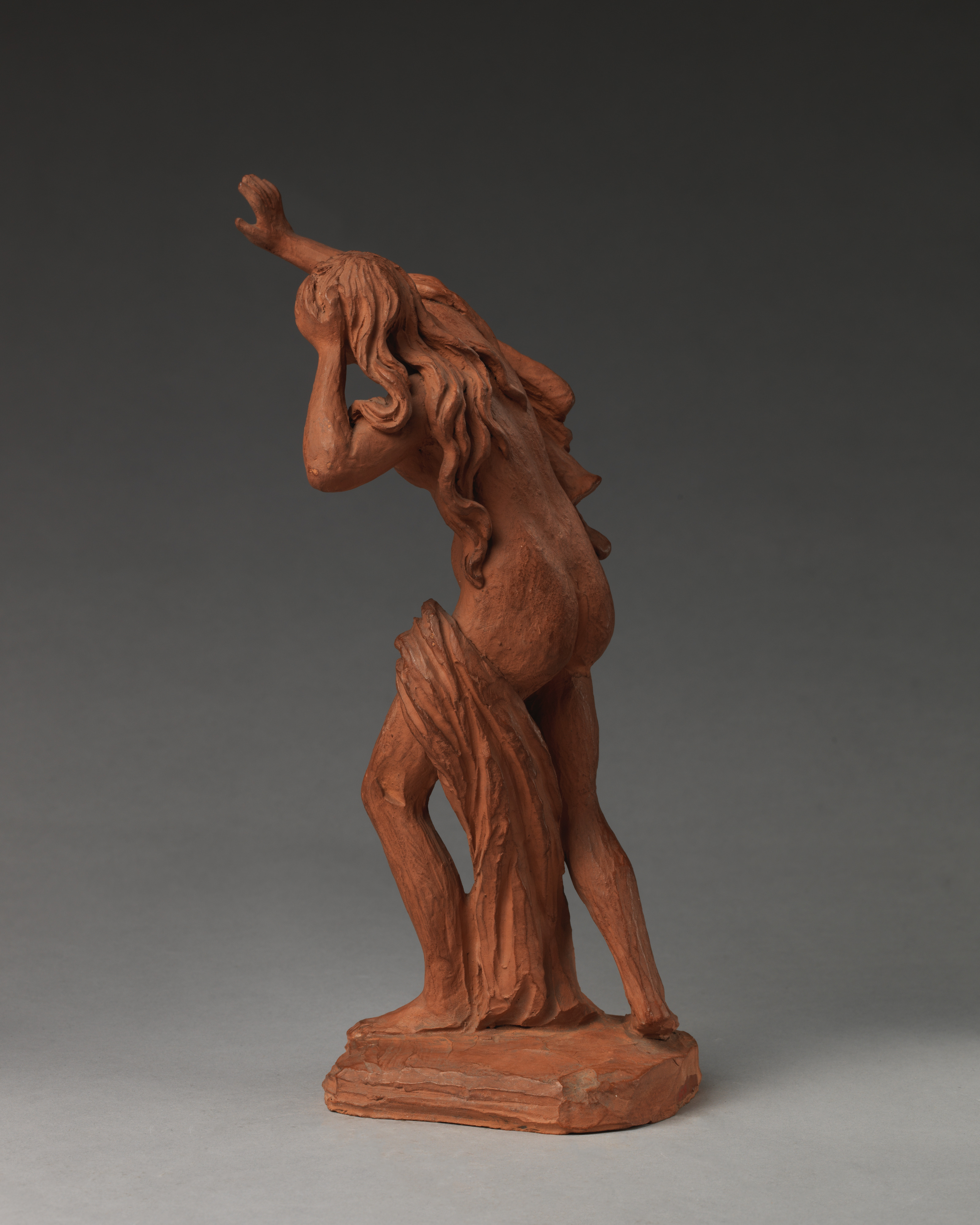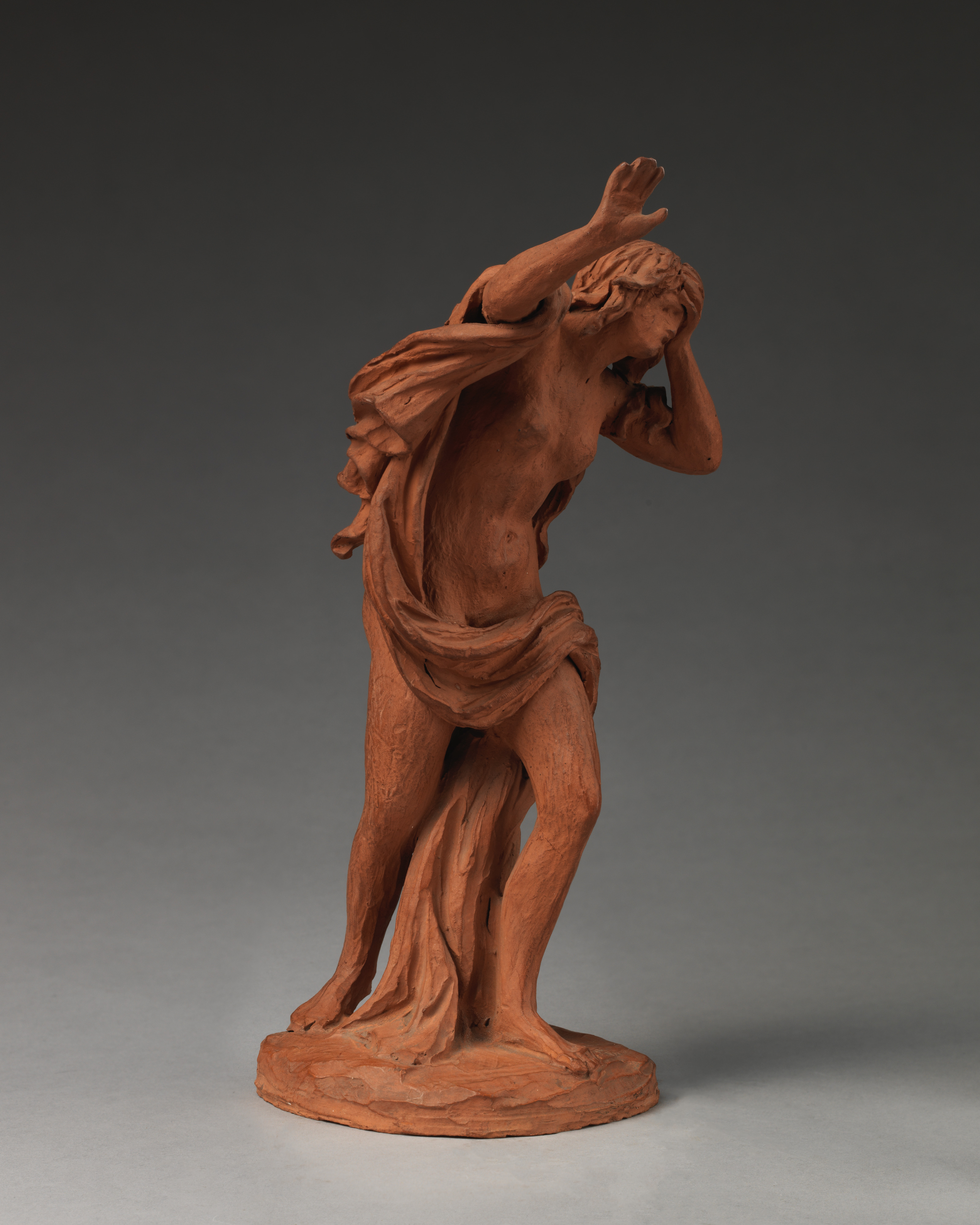Eve Bewailing the Death of Abel
Joseph Nollekens British
Not on view
Eve, the Biblical mother of humanity, halts in mid-stride to confront the body of her murdered son, Abel. The force of her arrested motion and out flung gestures of grief scatter her unbound hair and unfurl the length of drapery that billows around her upraised arm and cascades downward to her feet.
Nollekens modeled Eve by building up the clay with his fingers. He worked with speed, leaving the flesh patterned with rough strokes made with a flat wooden modelling tool. Long, deep incisions, scored into the clay with a pointed modelling stick, separate the locks of hair and punctuate the winding folds of drapery. Nollekens drove the stick’s sharp end into the clay to create the dark expressive holes that are Eve’s eyes and open mouth. To fashion her nose he pinched the clay with his fingers.
The subject of Eve mourning the death of Abel is not recounted in the Old Testament narrative of Cain’s murder of his brother (Genesis 4:8). Rather, John Milton’s epic poem of mankind’s fall from divine grace, Paradise Lost (1674), probably inspired the creation of this work. Nollekens’s Eve eloquently captures the brutal impact of bearing witness to the first human death that foreshadowed all those to come as the consequence of her and Adam’s sin and expulsion from Eden. The work’s free handling and dramatic emotional intensity reveal a creative proto-Romantic energy that Nollekens, who was Britain’s foremost Neoclassical marble sculptor, limited to his small terracottas. Termed "pensieri," or thoughts, Nollekens considered terracottas like Eve not as preparatory sketches for large-scale marbles, but rather as finished works of art; and he publicly exhibited many of them at the Royal Academy in London.
This image cannot be enlarged, viewed at full screen, or downloaded.
This artwork is meant to be viewed from right to left. Scroll left to view more.




